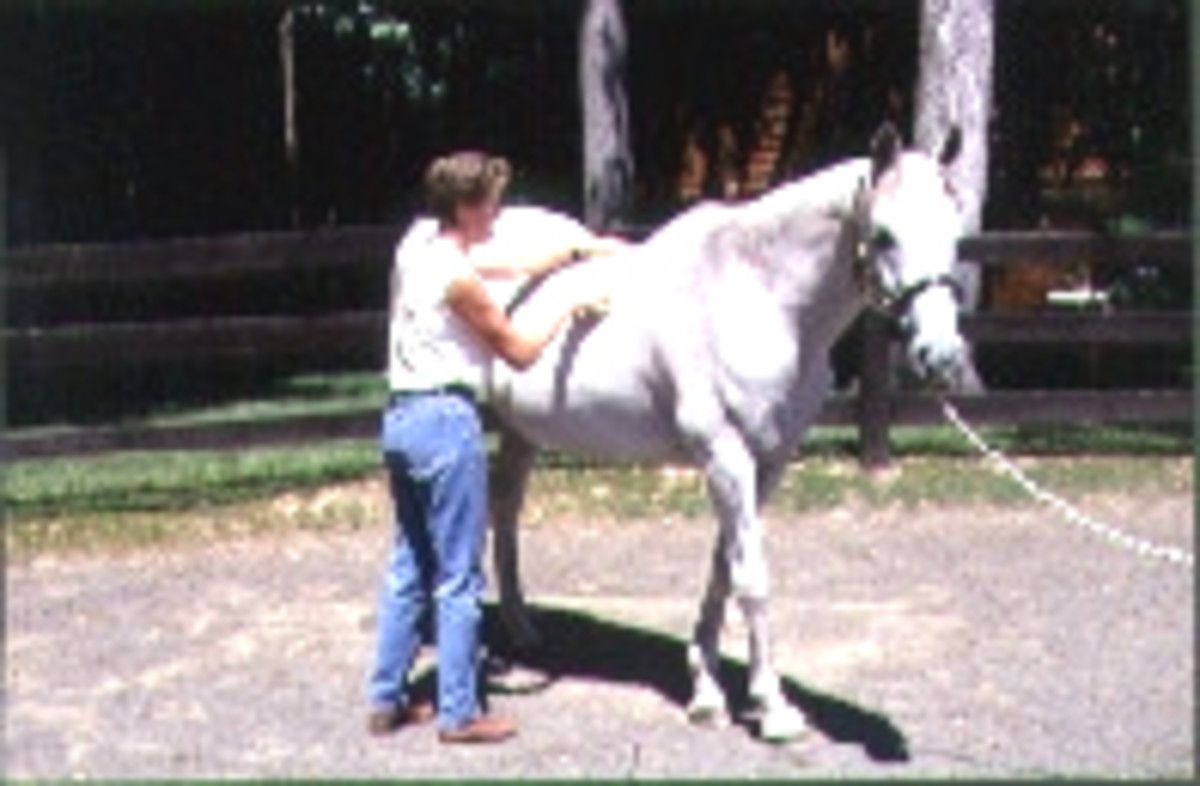
The “cures” available for aching backs are more often than not corrections of the hurtful things riders inadvertently inflict on their horses during use. If the diagnosis of primary back pain comes down to bruised muscles or soft-tissue strains, all contributing factors have to be eliminated for a permanent improvement to occur.
Bring in an expert tack fitter to assure that your saddle and pad conform perfectly to your horse’s back contours. Correct any contributing farriery problems with the advice of your veterinarian and farrier. Ride your horse considerately, always with the well-being of his back in mind. Try increasing turnout time for horses whose tight, stiff muscles are made all the more uncomfortable by inactivity. Flexibility improves when a horse meanders around, nibbling at ground-level grass or hay and swatting and biting at flies. Turnout also contributes to back health because it keeps the horse mentally content. “A happy horse is less likely to be a tense horse, so he’s less likely to have muscle problems,” says Stephen Soule, DVM, whose practice is in West Palm Beach, Florida.
Medications are commonly prescribed for back pain sufferers to control the signs. Muscle relaxers and nonsteroidal anti-inflammatory drugs (NSAIDs) can relieve your horse’s discomfort, but if you’re competing, you may not be allowed to use these medications. Intramuscular injections of estrone–a female hormone that surges in mares just before delivery to enlarge the birth canal–has been found to help some cases of back soreness by relaxing the pelvic muscles and ligaments. Fortunately, treatment with this rather weak sex hormone won’t change the patient’s gender behavior or appearance. Corticosteroids can be helpful in relieving inflammation. If the horse is suffering from muscle pain, the veterinarian may inject a mixture of corticosteroids and vitamin B12 directly into the painful muscle.
Standard tying-up preventives, such as feeding supplemental vitamin E and selenium and extra electrolytes, may also improve muscle metabolism and help prevent back-muscle pain–even if the horse in question has never actually tied up. Soule sees local muscle cramping as part of a continuum, starting with spasms and progressing to full-blown tying up.
If drugs are out of the question, acupuncture is a modality often used to ease painful muscles and ligaments, allowing the horse to move more correctly under saddle, which strengthens and supples his back. Massage by a qualified therapist may also help relieve back-muscle spasms. Chiropractic gets mixed reviews, ranging from those who view it as more beneficial than acupuncture because it seems to relax the muscles more quickly, to those who find that treatments have to be done on a continuing basis to do any good, to still others who see little, if any, benefit. The one thing all practitioners agree on is that chiropractic treatments should in no way be violent. If you’re considering acupuncture, chiropractic or both, Joyce Harman, DVM, of Harmany Equine Clinic in Washington, Virginia, suggests selecting the treatment based on the availability of certified, experienced practitioners. Other complementary therapies, such as laser and magnetic treatments, may help relieve muscle pain and tension for some horses. Consult with your veterinarian about these treatment options, and get his recommendations for their use.
A less common source of back pain is caused by bone-on-bone contact–the condition called “kissing” dorsal spins, in which the spinous processes of the vertebrae touch or override each other–and may be improved simply by relieving muscle tension. The topline of a “short-backed” horse, one who has naturally closely spaced vertebrae, may be “lengthened” and his kissing spines separated when tense muscles relax and allow him to carry his back in a “rounded” rather than “hollow” posture. If the horse has pain from vertebral contact, the veterinarian may treat it with corticosteroids injected between the spinous processes and possibly into the surrounding muscle, which is usually also sore.
Surgery to alleviate the pain of kissing spines is usually done only as a last resort these days. While it sounds reasonable to cut off the tips of every other overriding spine, the technique is extremely demanding of the surgeon. And because the surgery traumatizes the dorsal and intervertebral ligaments, the horse is likely to have a protracted recovery and be left with chronic problems after the procedure.
Considering that the equine back was in no way intended to carry weight above, it stands up remarkably well to the burdens we ask it to bear. But whenever you notice your horse objecting to his work or acting out uncharacteristically, think first of that naturally vulnerable area. Early identification and correction of painful back conditions, whether they are primary or secondary in origin, can prevent your horse from reaching that most unpleasant point of telling you in his own behavioral way, “Get off my back!”
Excerpted from an article that first appeared in the April 1999 issue of EQUUS magazine.
Pt. 1 – Your Horse’s Back Pain








